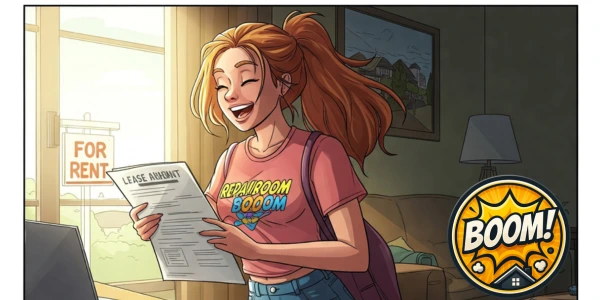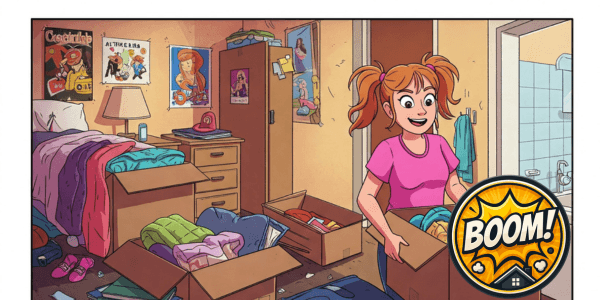A Renter’s Guide to Habitability and Repairs in California (Civil Code § 1941.1 & § 1942)
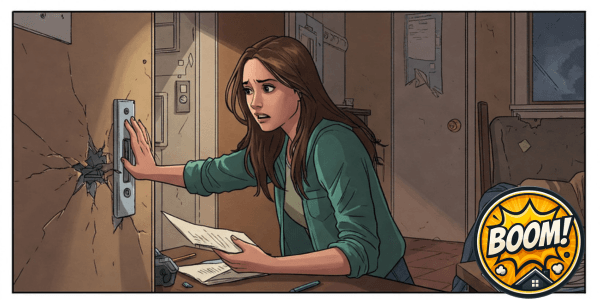
- A Renter's Guide to Habitability and Repairs in California (Civil Code § 1941.1 & § 1942)
- What Conditions Legally Violate Habitability in California? (CC § 1941.1)
- Landlord's Timescale for Repairs in California
- Your First Step: Giving Proper Written Notice for Repairs
- Why Documenting Everything is Crucial
- Tenant Options When Your Landlord Won't Make Repairs (California Civil Code § 1942)
- Conclusion: Procedure Enables Resolution
- FAQ – What Conditions Violate Habitability in California?
Dealing with a broken heater in winter, a persistent leak, or faulty wiring in your rental apartment isn’t just frustrating – it can be illegal. As a tenant in California, you have a fundamental right to a safe and livable home, a concept legally known as the “implied warranty of habitability.” This means your landlord has a legal duty to maintain your rental unit and make necessary repairs to ensure it meets basic living standards.
This right is embedded in every residential lease in the state, even if not explicitly written down, primarily under California Civil Code § 1941.1. But what exactly does “habitable” mean under the law? And what are your rights and options when your landlord fails to make essential California landlord repairs?
This guide will walk you through the specific conditions that legally define uninhabitable conditions in a California rental, explain your landlord’s responsibilities, and outline the crucial steps you need to take to get necessary repairs made, protecting both your comfort and your tenant rights California repairs.
What Conditions Legally Violate Habitability in California? (CC § 1941.1)
California law is quite specific about the minimum standards a rental property must meet to be considered habitable. According to [ CA Civil Code § 1941.1], your rental unit may be legally considered uninhabitable if it substantially lacks any of the following essential features:
- Weatherproofing: Effective protection for the roof and exterior walls against wind and rain, including unbroken windows and doors. (Issues here might relate to leaks needing repair).
- Plumbing Facilities: Functional plumbing in good working order, including hot and cold running water supplied to appropriate fixtures (sinks, bathtub/shower) and connected to a working sewage disposal system. (Need help with a plumbing issue? See our guides on Plumbing.
- Gas Facilities: Any gas lines and equipment must be maintained in good working order (if applicable).
- Heating Facilities: Working heating facilities maintained in good order are required. (A broken heater is often considered an urgent repair).
- Electrical System: Safe electrical lighting, wiring, and equipment that met code at the time of installation and are maintained in good working order.
- Sanitation: Buildings and grounds must be kept clean, sanitary, and free from accumulations of garbage, debris, filth, rodents, and vermin when rented and during the tenancy. (Persistent pests or mold issues? See our guide on best
-ways-to-remove-mold-from-bathroom. - Garbage Receptacles: An adequate number of trash cans or bins in good repair must be provided.
- Structural Integrity: Floors, stairways, and railings must be maintained in good repair and be safe. (This covers issues beyond minor cosmetic flaws).
- Safety Features: Operable deadbolt locks on main entry doors and working locking mechanisms on windows designed to be opened. Functioning smoke detectors (and CO detectors if fuel-burning appliances/attached garage exist) are also mandated.
Important Note: The law uses the term “substantially lacks.” This means minor inconveniences or cosmetic issues generally don’t make a unit legally uninhabitable. The problem must typically affect your health or safety significantly.
Landlord’s Timescale for Repairs in California
Once you’ve identified a habitability issue, you might wonder: how long does my landlord actually have to fix it? California law doesn’t set a single, fixed deadline for all repairs. Instead, it uses a “reasonable time” standard. What’s “reasonable” depends heavily on the severity of the problem.
- Urgent Repairs (Health & Safety Risks): Issues that immediately affect your health or safety require much faster action, often within days or sometimes even 24-72 hours depending on the situation. Examples include:
- Lack of hot or cold water
- No working heat in cold weather
- Major plumbing leaks or sewage backups
- Serious electrical hazards
- Gas leaks
- Significant pest infestations (rodents, widespread cockroaches)
- Broken exterior doors or window locks compromising security
- Non-Urgent Repairs: For less critical issues that still affect habitability but don’t pose an immediate danger, the law generally presumes 30 days is a reasonable timeframe for the landlord to act after receiving proper notice (this presumption comes from the context of the “Repair and Deduct” remedy in Civil Code § 1942). Examples might include a broken cabinet door (if it doesn’t cause a hazard), a minor appliance issue (if provided by landlord and essential), or less severe structural issues not posing immediate risk.
It’s important to distinguish between a true emergency threatening health or safety and a major inconvenience. Property managers often report that a significant portion of ’emergency’ maintenance calls are for non-critical issues. While frustrating, misrepresenting urgency can sometimes lead to misunderstandings or potential charges if your lease specifies costs for unnecessary emergency call-outs. Focus on clearly describing the impact of the issue in your notice.
Ultimately, if there’s a dispute, a judge might decide what was “reasonable” under the specific circumstances. Always notify your landlord promptly, especially for urgent issues.
Your First Step: Giving Proper Written Notice for Repairs
Before you can legally pursue most remedies like “Repair and Deduct” or potentially break your lease due to uninhabitability, you must first formally notify your landlord about the problem and give them that “reasonable time” to fix it. While oral notice might sometimes be legally sufficient to start the clock, providing written notice is absolutely critical.
Why Written Notice is Essential:
- Proof of Notification: It creates a dated record proving when you informed the landlord about the specific issue. This is crucial evidence if they later claim they weren’t aware.
- Clarity: It clearly outlines the problem, avoiding misunderstandings.
- Legal Requirement: It’s often a necessary prerequisite for using tenant remedies under California law.
What Your Written Notice Should Include:
- Your name, address, and the date.
- Your landlord’s name and address (as specified in your lease or commonly used).
- A clear and detailed description of the repair needed (e.g., “The heater in the living room is not producing heat,” “There is a large water leak under the kitchen sink,” “The deadbolt lock on the front door is broken”).
- A statement that the issue affects the habitability of your unit and requires repair.
- A request that the repairs be made within a reasonable timeframe (you can mention the 30-day presumption for non-urgent issues or state the need for faster action if it’s urgent).
- Your contact information.
- Keep a copy for your records!
How to Send It: Sending the notice via certified mail with a return receipt requested provides the strongest proof of delivery. Email can also work if that’s how you normally communicate with your landlord and your lease doesn’t forbid it, but make sure you keep a copy of the sent email.
Following this formal process is far more effective than making immediate threats. Documented, reasonable requests build a strong foundation if further steps become necessary.
Why Documenting Everything is Crucial
When dealing with repair issues, meticulous documentation is your best friend. If your landlord disputes the need for repair, tries to blame you for the damage, or illegally retaliates, your records become vital evidence.
Key Things to Document:
- Photos and Videos: Take clear pictures or videos of the problem as soon as you notice it. Show the extent of the damage or malfunction. If possible, use a method that includes a date stamp. Take follow-up photos/videos if the condition worsens.
- Copies of Written Communication: Keep copies of all letters or emails you send to your landlord regarding the repair request, as well as any written responses you receive. Include proof of mailing (like certified mail receipts).
- Communication Log: If you have phone calls or verbal conversations with your landlord or maintenance staff about the issue, keep a log. Note the date, time, person you spoke with, and a brief summary of what was discussed (e.g., “Spoke to Property Manager Jane Doe, described leak, she said she would send someone Mon.”).
- Repair Receipts (If Applicable): If you end up using the “Repair and Deduct” remedy (discussed later), keep detailed receipts for all materials and labor costs.
- Your Move-In Report: Always refer back to your m
ove-in-condition-report. This document proves the condition of the unit when you moved in and can show if a problem was pre-existing.
Remember, should a dispute unfortunately escalate to small claims court, this detailed documentation is precisely the evidence needed to support your case. Property managers often see tenants lose valid claims simply due to a lack of preparation and proof. This documentation creates a clear timeline and paper trail, strengthening your position should you need to pursue further action like filing a complaint [how-to-file-a-complaint-against-a-landlord] or defending against unfair charges.
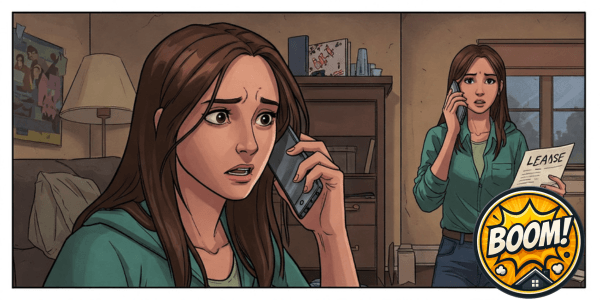
Tenant Options When Your Landlord Won’t Make Repairs (California Civil Code § 1942)
So, you’ve sent proper written notice detailing the habitability issue, waited a reasonable amount of time, documented everything, and your landlord still hasn’t made the necessary repairs. What now? California law provides tenants with several potential remedies, but it’s crucial to understand that each comes with specific rules and potential risks. Jumping straight to threats or drastic actions without following procedure is rarely effective and can backfire.
Before considering any of these options, ensure you have:
- Given proper written notice to your landlord.
- Allowed a legally “reasonable time” for the repair (considering urgency).
- Thoroughly documented the problem and your communications.
Here are the main legal options available under or related to [CA Civil Code § 1942 – official legislative info site]:
Option 1: Repair and Deduct
This is one of the most direct remedies allowed by CC § 1942. If the required conditions are met, you can arrange for the repairs yourself and deduct the cost from your next rent payment. However, there are strict limits:
- Cost Limit: The cost of the repair cannot exceed one full month’s rent.
- Frequency Limit: You can only use this remedy twice in any 12-month period.
- Conditions:
- The problem must be a genuine habitability issue the landlord is obligated to fix.
- You (or your guests) must not have caused the problem through negligence or misuse.
- You must have given the landlord proper notice and sufficient reasonable time to make the repair themselves.
- Process: Hire a qualified professional (if needed), pay for the repair, keep detailed invoices/receipts, and subtract the exact cost from your next rent payment. Provide copies of the receipts to your landlord along with your partial rent payment and a clear explanation.
- Caution: While legal, some landlords may still dispute the deduction or try to serve a notice for unpaid rent. Your documentation is key if this happens. If you feel your
[landlord-wont-make-repairs], this is one potential path.
Option 2: Abandonment (Moving Out)
If the defects are severe enough to make the unit truly uninhabitable, and the landlord has failed to fix them after proper notice and reasonable time, CC § 1942 allows you to vacate (abandon) the premises. If you properly use this remedy:
- You are released from paying further rent.
- Your lease obligations are terminated from the date you move out and return keys.
- Process: You should provide written notice to your landlord stating you are vacating due to the uninhabitable conditions under CC § 1942 and specifying the move-out date. Return the keys promptly.
- Caution: This should only be used for serious habitability defects. If a landlord disputes that the condition was severe enough to justify abandonment, they could potentially sue you for remaining rent under the lease. Strong documentation (photos, videos, possibly code enforcement reports) is essential. Consider if the issues constitute
[what-are-valid-reasons-to-break-a-lease]or explore options in[how-to-break-your-lease-without-penalty].
Option 3: Rent Withholding (Use Extreme Caution!)
Tenants sometimes ask if they can simply stop paying rent until repairs are made. While rent withholding can sometimes be a legal defense against eviction if serious habitability defects exist, this is generally the riskiest option for a tenant and should not be undertaken lightly.
- High Risk: Landlords will almost certainly respond to non-payment with a 3-Day Notice to Pay Rent or Quit, followed by an eviction lawsuit.
- Complexity: Simply stopping payment is usually not legally protected. To potentially use this as a defense, the habitability issue must be severe, you must have given proper notice and reasonable time, and often you may need to demonstrate you set aside the rent money (e.g., in an escrow account, though this might require a court order). Winning an eviction case based on rent withholding often requires proving very specific legal points and meticulous adherence to procedure.
- Legal Advice is Crucial: Never withhold rent without first consulting an experienced tenant rights attorney or a reputable legal aid organization
[LawHelpCA.org]. They can assess your specific situation and advise if withholding is even remotely viable and explain the significant risks involved. Misusing this can easily lead to eviction and damage your rental history, especially if, as property managers observe, the tenant isn’t fully prepared to legally justify their actions.
Option 4: Legal Action and Reporting Violations
Instead of or in addition to the above, you can:
- Sue Your Landlord: You can file a lawsuit, often in Small Claims Court, to ask a judge to order the landlord to make repairs and potentially award you damages (like a retroactive rent reduction for the period the unit was defective, or reimbursement if you paid out-of-pocket for something the landlord should have fixed). Remember the insight from property management: come prepared! Your meticulous documentation (photos, notices, logs) is absolutely essential to proving your case.
- Report to Code Enforcement: Contact your local city or county Building Department, Health Department, or Code Enforcement agency. They can inspect the property, document violations, and issue orders to the landlord to make corrections. This creates an official record and puts pressure on the landlord. Learn more about this process in our guide
[how-to-file-a-complaint-against-a-landlord].
Conclusion: Procedure Enables Resolution
Navigating repair issues requires understanding your rights, but also recognizing the value of clear communication and proper procedure. While frustrations can certainly arise if repairs are delayed, remember that most professional property management companies generally prefer to work collaboratively with tenants to resolve legitimate issues. After all, promptly addressing necessary repairs protects the property owner’s investment and ensures tenant safety and satisfaction – key aspects of their day-to-day operation.
Property managers typically have internal systems designed to track maintenance requests and address repairs efficiently, but these systems function best when they receive clear, documented information. Providing proper written notice and detailed documentation, as outlined in this guide, isn’t just about fulfilling a legal requirement; it actively helps the property manager accurately understand the problem, prioritize the request appropriately, track it internally, and justify necessary actions or expenditures to the property owner.
Starting with vague complaints or immediate aggression can sometimes hinder this process, making it harder even for responsive managers to address your concerns effectively. Your power lies in knowing your rights, communicating clearly and professionally through the established procedures (especially written notice), and keeping good records. This approach enables a more constructive dialogue and is ultimately the most effective way to ensure your landlord meets their obligations and your home remains safe and habitable.
Disclaimer: This article provides general information based on common practices and specific data shared, and touches on California law . Landlord-tenant laws and specific charges vary by location and lease terms, and laws can change. Consult your specific lease agreement and local/state laws for definitive legal information. This is not a substitute for legal advice from a qualified attorney.
FAQ – What Conditions Violate Habitability in California?
What basic conditions must my California landlord provide for my rental to be legally habitable?

Under California Civil Code § 1941.1 (the “implied warranty of habitability”), your landlord must ensure your unit has essentials like effective weatherproofing (roof, walls, windows), working plumbing with hot and cold water, a safe heating system, functional electrical wiring and lighting, conditions free from pests and garbage (sanitation), structurally sound floors/stairs/railings, and required safety features like working door and window locks
My heater broke in winter! How fast does my landlord need to fix it in California?

Issues directly impacting health or safety, like having no heat in cold weather or no hot water, are considered urgent repairs. California law requires landlords to address these much faster than non-urgent issues – often within days or even sooner, rather than the presumed 30 days for minor problems. Notify your landlord in writing immediately about the urgency
Can I just text my landlord about a needed repair, or do I need to send a formal letter?
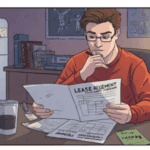
While texting or calling is good for quick communication, you should always follow up with formal written notice (email or certified mail) for any significant repair request, especially those related to habitability. This written record is crucial proof that you officially notified your landlord and allowed “reasonable time” for the repair, which is legally required before you can use remedies like “Repair and Deduct”.
What are the biggest risks if I use the “Repair and Deduct” option in California?
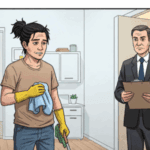
The main risks are: 1) Exceeding the strict limits (repair cost cannot be more than one month’s rent, and you can only use it twice per 12-month period per CA Civil Code § 1942). 2) Not providing proper prior written notice and allowing reasonable time first. 3) Having the landlord dispute the necessity/cost of the repair or claim you caused the issue, potentially leading to an eviction lawsuit for the deducted rent amount. Thorough documentation is vital
Is it okay to just stop paying rent if my California landlord ignores major repair requests?

No, this is extremely risky and strongly discouraged without legal advice. Simply withholding rent without following very specific legal steps (which often involve court action or escrow accounts) is likely to result in a 3-Day Notice to Pay Rent or Quit and an eviction lawsuit in California. It is not a simple or safe remedy for tenants to use independently.
What if the damage needing repair was actually caused by me or my guest?
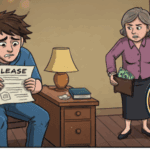
The landlord’s duty to repair habitability issues generally does not cover damage caused by the tenant, their family, guests, or pets due to negligence or intentional misuse (this falls under tenant obligations, often cited with CA Civil Code § 1941.2). If you caused the damage beyond normal wear and tear, you would typically be responsible for the cost of that specific repair.


